Beyond the formula of the age of reason: experts, social sciences, and the phonic public in international politics
Tomoko Akami (Associate Professor - The Australian National University)
In recent years, the League of Nations has been examined as a ‘harbinger of global norms’ for the following UN system[1], rather than as a failed attempt at the world’s first collective security organization. Accordingly, scholars’ attention has shifted from diplomats, politicians and military officers to the experts who were in charge of the various norm-making projects of the League. One could even claim that the League was the first inter-governmental organization that began to consolidate the work of experts for the governing of the world. It mobilized experts, their ‘non-governmental’ expert organizations, and their networks across the globe.[2]
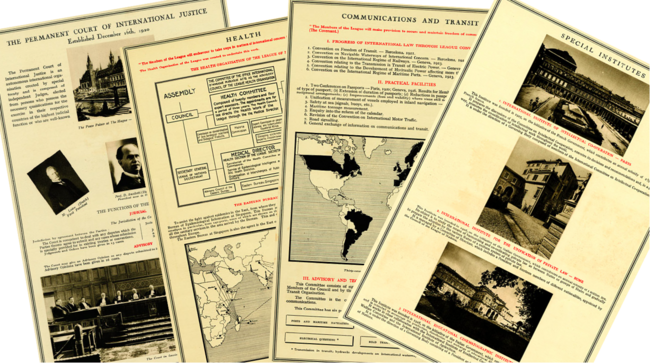
An overview of some of the League’s many areas of expertise, produced by the Information Section, 1930
In order to understand the role of the League in shaping global governing norms, we need to examine the experts who carried out this core activity, many of whom continued their work in the succeeding projects of the UN and its agencies. This blog will discuss two problematic assumptions held by the historical protagonists themselves that need to be unpacked by the historian, in the hope that this will stimulate further debate:
(1) That the experts belonged to the ‘liberal professions’ and represented civil society, and;
(2) The assumption made by the League, the experts and the foreign policy elite that the 'public’ was the reading middle-class public, while technology and politics brought a ‘new’ public, namely the phonic public, to the fore. (By the phonic public, I mean the public who’s political actions were based on information gained from sound bites of radio and speeches, as opposed to the reading public who gained information from newspapers, books and journals.)
I suggest that the League inherited these assumptions about experts and the public from the social sciences, as they emerged in the Enlightenment era, and that it failed to adjust to the new era of the mass-based politics and the developments of electronic media.
Problem 1: Assuming that the experts belonged to the ‘liberal professions’, independent from the state, and were actors of and for ‘civil society’
The League’s global norm setting took various forms, which required experts of diverse fields. For setting trans-border norms, the expertise of international law was crucial. Its experts, including many career diplomats, who were trained in a university faculty of law and/or professional legal institutions, became central in the codification of these international norms at the League.[3] Global norm-setting also required the standardization of terminologies, codes and practices across countries. The League set up various ‘technical committees’, which initiated such standardization in their respective fields. The standardization also provided the common ground for experts who came from different countries to conduct cooperative operations. These operations were wide-ranging, and the League mobilized experts of medicine, natural sciences, engineering, and other technologies and infrastructures. Many, however, came from the social sciences. While they were initially largely focused on ‘domestic’ issues,[4] their expertise in national and colonial affairs proved to be the basis of their ‘international’ works for the League.
In the era of the League, social sciences, with origins going back to the Enlightenment[5], developed into more specialized, ‘scientific disciplines’, such as political science, economics, sociology, statistics, demography, anthropology, and psychology. The speed and scope of this ‘scientific compartmentalization’ differed, however, from country to country. It was well advanced in the US, for instance, but much less so in other countries, even after the Second World War.[6]
The still mainly ‘pre-compartmentalized’ social sciences, then, saw experts of different fields working together, and produced useful approaches and results for the League’s programmes. Social medicine, for example, saw social and economic conditions, such as poverty, as having a significant impact on people’s health and became a core tenet of the League’s Health Committee in the 1930s. Its programmes sought collaboration among experts of medicine, sociology, economics, psychology, and public administration.[7]
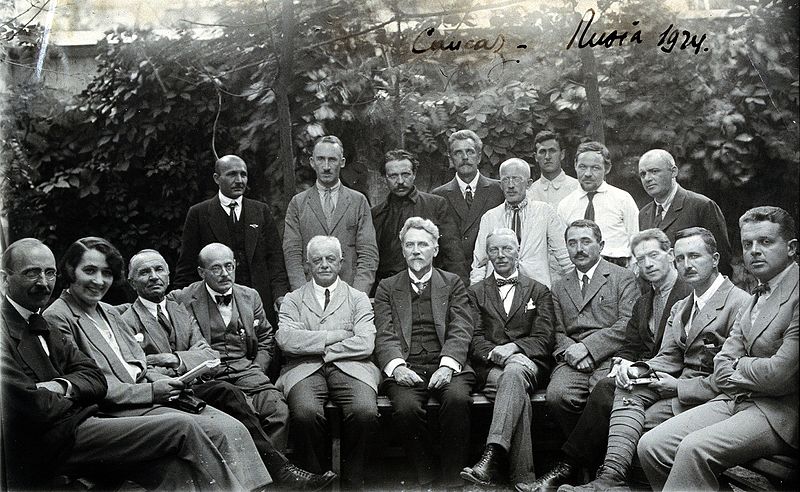
Malaria Commission of the League of Nations, 1924
Pressures to create more ‘scientific’, stream-lined, and specialized ‘disciplines’ of social sciences were, however, strong in the interwar period, and this affected the experts who worked for the programmes of the League. This was evident, for example, in the case of the League’s ‘International Studies Conference’ (ISC, 1928–1954) which aimed to establish the ‘scientific study of international relations’.[8] The experts themselves had their own reasons to establish their separate disciplines; they wanted to gain greater legitimacy, influence over policy-makers, and prestige for their particular profession. They also wanted influential and separate chairs and departments at universities. Furthermore, the major philanthropic organizations, such as the Rockefeller Foundation and the Carnegie Endowment for International Peace, which funded the ISC as well as other programmes of the League, expected ‘scientific’ methods and knowledge for investments. As a result, the League’s committees, as well as relevant non-governmental organizations, tried to eliminate ‘non-scientific’ (namely ‘religious’ or ‘activist’) elements, and stressed ‘scientific’ aspects of their programmes, when they applied for the funding from these foundations.[9]
This development of the social sciences made the relationship between their expertise and the state increasingly symbiotic, rather than oppositional. In this context, the analytical framework of the state versus civil society, in which the experts and their ‘non-governmental’ organizations tend to be associated with the latter, seems artificial or even misleading. To be sure, some social scientists were committed to social activism, and maintained a critical stance to the state and state policies. Yet, the prototype of social sciences, sociology, began as a response to the need of the modern state to expand its functions into social policies in order to deal with the complex issues resulted from industrialization, democratization, and class conflicts.[10]
While further specialization of social sciences occurred in the inter-war period, these newly established disciplines also remained largely policy-relevant studies, and the states needed their experts to formulate and execute these specialized policies. As a result, although some experts of social sciences pursued their careers in academia or in private practices, others sought their careers in public administrations at a municipal, national, imperial, or colonial level. While some experts remained ‘independent from the state’ throughout their careers, many did not: They became ‘advisors’, ‘consultants’ or ‘think tank’ members for state policy makers or switched their jobs between public offices, universities and the private sector.
This symbiotic relationship between the experts and the state affected the relationship between the experts and the League. To start with, many policy-relevant experts, who worked at the League’s technical committees, had worked with their state before their prominence in the field was recognized. The experts at the League often continued to unofficially represent their countries, and were often pre-approved and sent by their own governments. At the League, then, while the experts had to work with various states, they also balanced their professional ethics with the interests of the states they (unofficially) represented.
In these complex power dynamics, what defined their actions (their reformist agenda, professional sense of mission, sense of service to their own state or the League, or their more technical concerns) is hard to discern. Some patterns are clear, however: Experts of the League committees and its agencies advanced certain social causes, such as control of traffic in women and children and dangerous drugs, abolition of slavery, repatriation of refugees, protection of minorities, improvement of labour conditions, and equal legal status for women. The documents of the various committees of the League also indicate that they were for democratic changes, opposed fascism and militarism, and wanted to avoid war and conflict.
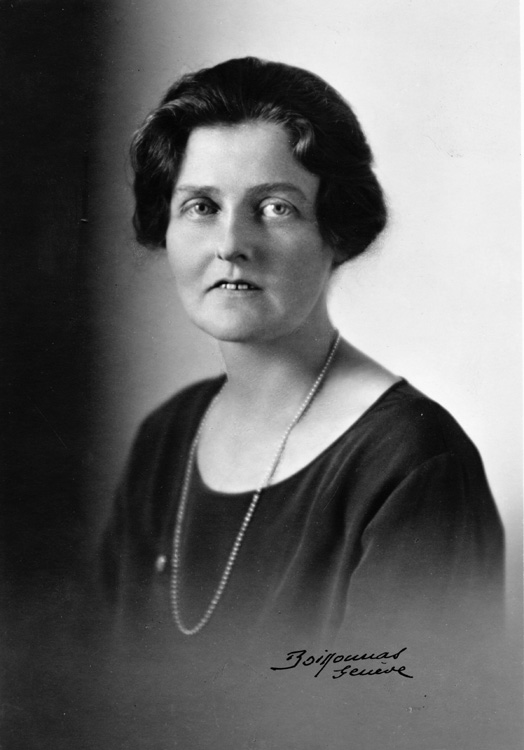
Rachel Crowdy, head of the Opium Traffic and Social Issues Section, 1919-1931
Yet, the League was not a pacifist organization. The interwar so-called ‘idealists’, many of whom were associated with the League, had more ‘realist’ traits than previously thought.[11] Neither did the League oppose the prevailing colonialism of the victorious empires, and was ultimately counter-revolutionary. Its primary concern was to maintain the order, prevent or manage major crises and conflicts, and govern the existing system. Its reform projects, therefore, served as a means to this end. Accordingly, more radical supporters of the League became increasingly frustrated in the mid/late-1930s and advocated an alternative League with a stronger commitment to pacifism.[12] Any analysis of the experts at the League needs to be located in this complex political and ideological terrain, not in a simple framework of civil society versus the state, or national versus international.
Problem 2: Experts in the era of electronic media, mass-based politics, and the phonic public
The League inherited its views on the role of experts and the public from those of the founders of the social sciences in the era of the Enlightenment. While these views were outmoded in the interwar period, the League and its experts did not adjust to the new forces at play.
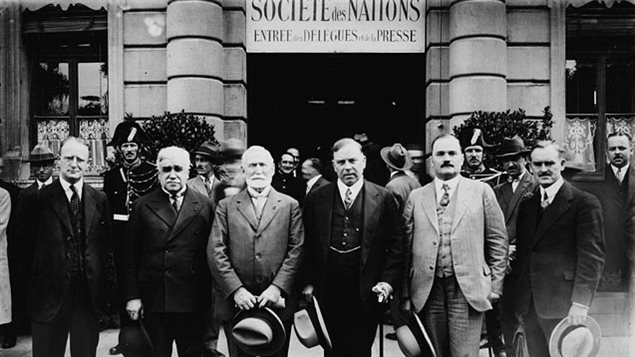
The Canadian delegation in front of press entry to League of Nations, 1928
Put simply, the League held that rational, impartial, and science-based accurate information and knowledge would lead the people in the right direction (peace). Conversely, irrational, biased, wrong, and inaccurate information and knowledge would cause conflicts and wars. The best strategy of moral disarmament, to avoid conflicts and wars, therefore, was to prevent such false information and knowledge from entering the public arena.[13] The League, accordingly, stressed the significance of public opinion in international politics, and took its publicity work very seriously. It set up an Information Section at the Secretariat and overseas publicity offices in London, Paris, Rome, Tokyo, Berlin, New Delhi (initially in Bombay), and Beijing. It created a pressroom within the building of the League’s Secretariat in Geneva and fed its ‘news’ to journalists and news media organizations across the globe.
Moreover, the League, like the founders of the social sciences, equated the public with the well-educated, rational, and reading middle-class. Experts were to digest the issues and communicate them to this public. The League did not change this assumption about the public, or the role of experts, despite the fact that politics were becoming more mass-based. Accordingly, the League’s publicity efforts remained directed towards the experts who would enlighten and educate the ‘public’.[14] As this ‘public’ were presumed to be reading, it inevitably defined the nature of the publicity activities of the League, conducted by the Information Section, and through Intellectual Cooperation, International Media Conferences, and International Studies Conferences.
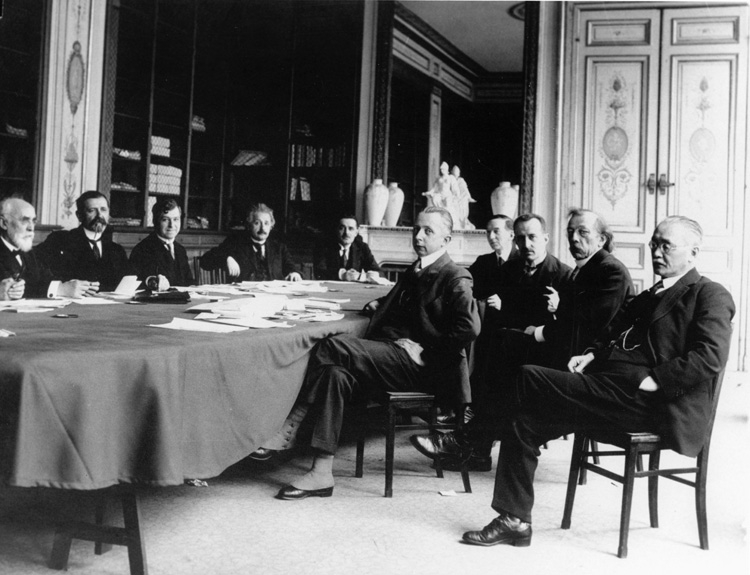
The International Committee on Intellectual Cooperation (ICIC), 1922 (Albert Einstein in the middle)
The danger of ‘fake news’, then, was clearly recognized by the League, and while the accuracy and impartiality of information was seen as the very base for democracy and peace,[15] there were serious shortcomings in the assumptions of the League. First, the League believed in the public’s rationality. The League’s experts produced accurate and scientific material for the public so that the public could make rational decisions. Meanwhile, especially (but not exclusively) fascist and socialist regimes deployed experts to create materials, such as posters, slogans, leaflets, or broadcast speeches, appealing directly to the emotions of the political masses. Combined with coercion, their tactics proved effective.
Such tactics were not foreign to capitalist democracies. Flourishing advertising companies (particularly in the US), were developing tactics to allure consumers, appealing to their psychologies and emotions. Indeed, Woodrow Wilson’s wartime propaganda machine was led and staffed by these advertising gurus. The League, however, chose not to use this commercial-based, and ‘emotion-oriented’ advertising formula. Rather, they preferred to educate the public indirectly through experts.[16]
Second, the League did not make fundamental changes in their publicity strategies and tactics despite the fact that they were outmoded by the emergence of electronic media (especially radio broadcasting), mass-based politics (or largely male-mass-based politics), and the phonic public. Political leaders in many countries quickly recognized the significance of domestic radio broadcasting. It was the first ‘direct’ means for political leaders to simultaneously appeal to the masses across the nation. By the mid/late-1930s, radio broadcasting overseas services became possible, which states quickly utilized for external policy purposes.[17]
How were these political masses and the phonic public theorized by contemporary social sciences? Walter Lippmann’s Public Opinion(1922) and Phantom Public(1925) recognized the emergence of mass-based politics as a new political development and warned about its detrimental effects on democracy.[18] Here, he reinforced the importance of experts in enlightening the masses, and in this sense, it was a call for a return to the ‘age of reason’, rather than the adjustment to the new era. A Marxist public intellectual in Japan, Tosaka Jun, was critical of the neglect of the political masses, and concluded in 1932: Contemporary theorists were incapable of recognizing public opinion beyond that of the bourgeois class. They remained in the Enlightenment era, he argued, and routinely dismissed proletariat public opinion as ‘mob utterance’.[19]
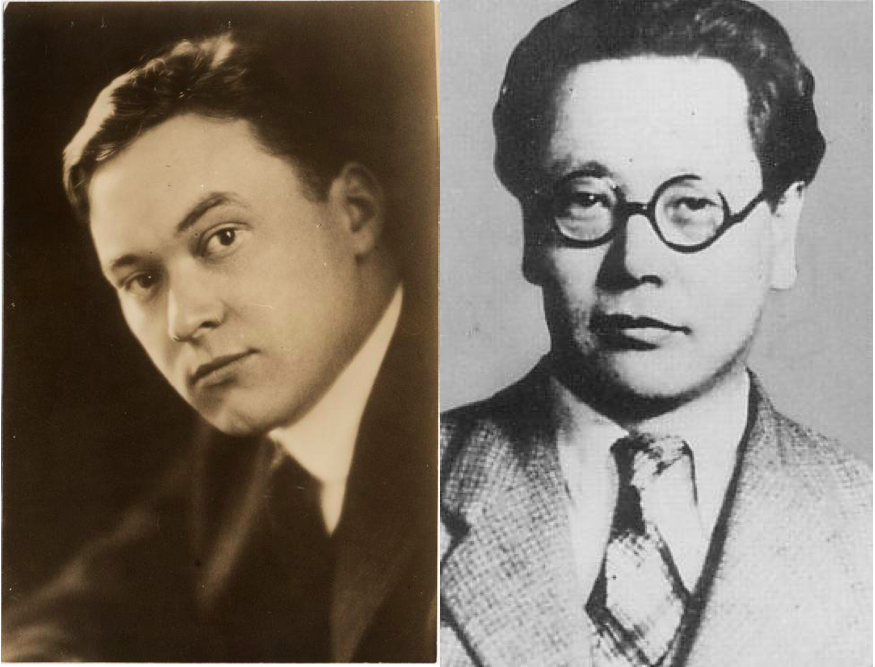
Walter Lippmann (1914) and Tosaka Jun (undated): Two views on public opinion
While the proletariat public was not identical with the phonic public (as Tosaka also recognized), both were new formations of ‘the public’. The League failed to recognize the emergence of the proletariat public and the phonic public both as significant new political phenomena, and to adjust their formula. Although the League’s Information Section created promotional photos, slides, and films, and used radio broadcasting, even creating its own 'Radio Nations' (1929-1939), there is little evidence of discussions about the need to change their basic assumption regarding the public, nor how to adjust to the era of mass-based politics and the phonic public.
Last, the League’s heavy reliance on the experts also had an indirect detrimental long-term effect on the transparency and public appeal of subsequent international organizations, and for our understanding of international affairs. As Nicholas Guilhot’s recent work demonstrates, in the US of the 1950s, the lessons of fascism did not make post-war experts of international affairs adjust to the era of electronic media and mass-based politics. Instead, they ‘distrusted the masses’, wanted to ‘insulate politics from democracy’, and wanted to reserve their field for statesmen and an elite circle of foreign policy experts.[20]
And beyond the formula of the age of the reason
There is a serious danger in the exclusive and compartmentalized nature of current experts at international organizations, as the knowledge they produce is understood only among the experts who understand the jargon of their narrow disciplinary borders and remains unattainable for most of the public. Though the current public may be better educated than any preceding generation, it is predominantly a phonic public, getting its information through digital sound bites. Have experts at international organizations and theorists of international affairs today gone beyond the formula of the age of reason, which was already outmoded in the era of the League, but nonetheless restored in the immediate post-war period? Our analyses of experts at the League have to grapple with this over-due question.
References:
[1] Susan Pedersen, ‘Back to the League of Nations’, American Historical Review, 112 (2007), p. 1092.
[2]Anthony Giddens, Nation-state and Violence, Berkeley: University of California Press, 1985, pp. 163–164. See also Madeleine Herren, Internationale Organisationen und globale Ordnung, Darmstadt: Wiss Book Company, 2009; Tomoko Akami, Internationalizing the Pacific: the US, Japan and the Institute of Pacific Relations in War and Peace, 1919–1945, London: Routledge, 2002.
[3]Martti Koskenniemi, ‘History of international law, World War I to World War II’ in Max Plank Encyclopedia of Public International Law, Oxford: Oxford University Press, published digitally in 2011, p. 2 in a downloaded version. See also their role in shaping the mandate system in Antony Anghie, Imperialism, Sovereignty and the Making of International Law, Cambridge: Cambridge University Press, 2007.
[4]Sebastian Conrad, What is Global History, Princeton: Princeton University Press, 2016, p. 3.
[5]Theodore M. Porter, ‘Genres and objects of social inquiry, from the Enlightenment to 1890’, in Theodore M. Porter and Dorothy Ross Eds., The Modern Social Sciences, Cambridge: Cambridge University Press, 2003, pp. 16–22.
[6]Dorothy Ross, ‘Changing contours of the social science disciplines’, in Porter and Ross ed., The Modern Social Sciences, pp. 213–214.
[7]This was evident in the League’s programmes, such as the reform of the Chinese public health system, rural hygiene, nutrition, housing, and Malaria treatment. Iris Borowy,Coming to Terms With World Health: the League of Nations Health Organization, 1921–1946, Frankfurt: Peter Lang, 2009, pp. 325–420; Sunil S. Amrith, Decolonizing International Health: India and Southeast Asia, 1930–65, New York: Palgrave, 2006, pp. 28–40.
[8]On the ISC, see David Long, ‘Who killed the International Studies Conference?’, Review of International Studies, 32: 4 (2006): 603–622; Michael Riemens, ‘International academic cooperation on International Relations in the interwar period: the International Studies Conference,’ Review of International Studies 37: 2 (2011): 911–28; James Cotton, ‘Early international relations teaching and teachers in Australia: Institutional and disciplinary origins’, Australian Journal of International Affairs, 67: 1 (2013): 71–97.
[9]Katharina Rietzler, ‘From peace advocacy to international relations research: the transformation of transatlantic philanthropic networks, 1900–1930’ in Davide Rodogno, Jakob Vogel, and Bernhard Struck eds, Shaping the Transnational Sphere: Experts, Networks and Issues from the 1840s to the 1930s, New York: Berghahn Books, 2014, pp. 185–187; Akami, Internationalizing, pp. 50–53.
[10]Robert Banister, ‘Sociology’, in Porter and Ross eds, The Modern Social Sciences, pp. 331–332.
[11]See David Long and Peter Wilson Eds., Thinkers of Twenty Years’ Crisis: Inter-war Idealism Reassessed, Oxford: Clarendon Press, 1995.
[12]Robert D. Accinelli, ‘Militant internationalists: The League of Nations Association, the Peace Movement, and US foreign policy, 1934–38’, Diplomatic History, 4: 1 (1980), pp. 30–33.
[13]Heidi Tworek, ‘Peace through truth: the press and moral disarmament through the League of Nations’, Medien und Zeit, 4 (2010): 16–28.
[14]Tomoko Akami, ‘The limits of peace propaganda: the Information Section of the League of Nations and its Tokyo office’, in Jonas Brendebach, Martin Herzer, and Heidi Tworek (Eds.), International Organizations and the Media in the Nineteenth and Twentieth Centuries: Exorbitant Expectations, London: Routledge, 2018, pp. 76–77.
[15]See for instance: http://projects.au.dk/inventingbureaucracy/blog/show/artikel/the-league-and-the-combating-of-false-information/.
[16]Akami, ‘The limits’, p. 71.
[17] Tomoko Akami, Soft Power of Japan’s Total War State: the Board of Information and Domei News Agency in Foreign Policy, 1934–45, Dordrecht: Republic of Letters, 2014, pp. 108, 125, 168, 210
[18]John Luskin, Lippmann, Liberty, and the Press, [Tuscaloosa, AL]: University of Alabama Press, 1972, Chapter 2.
[19]Tosaka Jun, ‘Yoron no kōsatsu [On the public opinion]’, Yuibutsuron kenkyū[Study on Materialism], 2 (1932), pp. 60–61.
[20] Nicolas Guilhot, ‘Introduction: One discipline, many histories’ in N. Guilhot ed., The Invention of International Relations Theory: Realism, the Rockefeller Foundation, and the 1954 Conference on Theory, New York: Columbia University Press, 2010, pp. 27–28.
Images:
1) The League of Nations, The League of Nations – a pictorial survey, Geneva, 1930 http://www.indiana.edu/~league/pictorialsurvey/lonapscover.htm
2) Malaria Commission https://commons.wikimedia.org/wiki/File:Malaria_Commission_of_the_League_of_Nations._Photograph,_192_Wellcome_L0011635.jpg
3) Rachel Crowdy https://libraryresources.unog.ch/womendiplomacy/notablewomen
4) The Canadian Delegation https://www.thecanadianencyclopedia.ca/en/article/external-relations/
5) ICIC http://www.martingrandjean.ch/intellectual-cooperation-multi-level-network-analysis/and https://www.indiana.edu/error/404.html
6) Lippmann and Jun https://no.wikipedia.org/wiki/Walter_Lippmann#/media/File:Walter_Lippmann_1914.jpg (Portrait of journalist Walter Lippmann by the photographer Pirie MacDonald, published in 1914. Image courtesy of the Walter Lippmann Papers, Yale University Manuscripts & Archives Digital Images Database, Yale University, New Haven, Connecticut.); https://en.wikipedia.org/wiki/Jun_Tosaka#/media/File:Jun_Tosaka.JPG (Unknown, Japanese book "Pictorial History of Modern Japan Vol.11" published by Sanseido)
